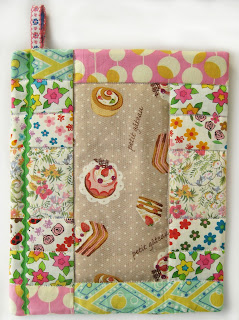Just finished:
A little closer:
I have experienced a few, minor episodes of molestation. But when #MeToo exploded, I was astounded to discover that virtually all my female friends and acquaintances have also been molested - many experiencing far worse than I did - regardless of how strong, confident, and ferocious I knew them to be.
And if that's the case in my relatively privileged circles - imagine how much more for girls, women, and some men, living in more challenging circumstances?
And what about our mothers? I can remember when the phrase "date rape" and "sexual harassment" didn't exist. What did they think about when it happened? Did they blame themselves? Did they tell anyone? And what about their mothers?
And then....what about the women who stitched all the quilts and embroidered all the textiles in my vintage collection?
"#MeToo" also coincided with a new tv series based on Margaret Atwood's novel "The Handmaid's Tale." The handmaids are concubines who bear children for the infertile rich, and wear voluminous red garb, with white bonnets.
So it wasn't much of a mental leap over to Sunbonnet Sue. To acknowledge the endurance of our foremothers, I wanted to use vintage linens.
My collection included this set of delightful antimacassars - stiff linen pieces that I am pretty sure were intended for chair and couch armrests and backs, to keep them clean. There were five of these long narrow ones (why 5?),

And 5 more of these slightly bigger units, which I am guessing are the head rests.
The hand stitchery is gorgeous.

I also have several pillowcases with embroidered and/or crocheted full-skirted women along the hem. I chose the following pillowcase, in which the belles have inexpert torsos and arms:
One of the consequences of sexual abuse is lasting damage to body image. Hiding - with clothing, with fear of going out, with eating disorders - is not uncommon among people who have been severely abused.
...and used those to cut feedsack fabrics from the 1930s - plus a smattering of other vintage fabrics. I fused them to four armrest antimacassars, and did a zigzag around each shape to hold it down.
The resonance of feminine biology in the flower in the next figure was serendipitous - I didn't even notice until it was cut out.

Below, the bright red bonnet was probably a mistake - it stands out too much, and is newer than the other fabrics - but I couldn't resist the needlework print, wanting to emphasize the point that perhaps one reason our foremothers enjoyed sewing, embroidery and quiltmaking so much was because it reduced their stress and anxiety.

The most challenging aspect of this quilt was cross-stitching the words. I don't have a much cross-stitch experience, but fortunately I have this thrift shop find:
The book is copyrighted 1967, to Doris Drake in Thomasville, Georgia, If you find a copy, (they sometimes appear on ebay and etsy), grab it - it has a bunch of vintage fonts. I more-or-less used the lower one on this page.
I embroidered "Me Too" on an old grey handkerchief. The line of letters seemed straight when I stitched them (in a hoop); but the underlying grey hankie was so flimsy that it got away from me and the O's are rising.
...which gives me even more respect for the women who did the original, perfect, stitching along the hankie's bottom edge.
The line of red stitching on the left side of the quilt is a rip in the pillowcase. A little bit of batting shows through.
The buttons that run down the sides represent more people; they also represent garments undone.
I can't possibly be the only quilter who has connected "#MeToo" with Sunbonnet Sue. I hope this inspires more quilted responses, and would welcome seeing other peoples' interpretations.
UPDATE: A very nice, brief history of Sunbonnet Sue is at https://suzyquilts.com/sunbonnet-sue-brief-history. Also, a commenter below noted other examples that have unusual/quirky themes.
UPDATE: Another history of Sunbonnet Sue, with some irreverent examples in questionable taste.



















































